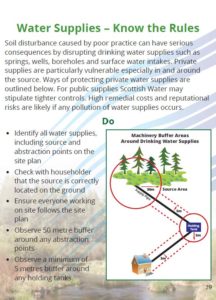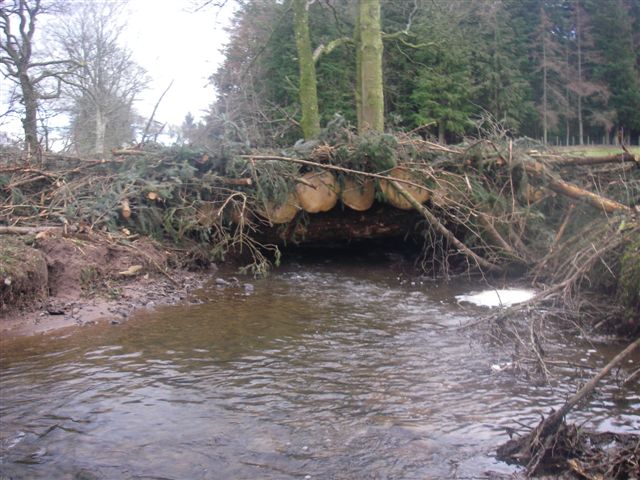Forestry & Water Scotland (FWN 29)
20 September 2017Earlier this year a new initiative was launched to help anyone who manages woodlands to minimise and mitigate the risk of their activities causing diffuse pollution.
The initiative, called Forestry & Water Scotland, is a partnership between the Scottish Government, Forestry Commission Scotland, SEPA and the forestry sector (Confor and the Forestry Contracting Association).
It was established following a similar successful project with the agricultural sector called ‘Farming and Water Scotland’ and focuses on ‘prevention rather than cure’ to mitigate risks and keep a woodland manager’s costs down.
A new webpage is available at www.forestrywaterscotland.com, offering a range of materials that explain how forestry operations should be planned, carried out and monitored to protect the water environment. Forestry operations on farmland must comply with the UK Forestry Standard as well as the General Binding Rules which operate in Scotland, and the straightforward messages given by Forestry & Water Scotland remind all woodland workers what to do.
- An illustrated pocketbook called “Know the Rules”, which gives straightforward messages on how to protect water quality during forestry activities such as ground preparation, drainage, storing and handling fuels and using pesticides and fertilisers;
- A handy vehicle sticker called “Keep Your Distance”, which sets out the minimum working distances from watercourses;
- Three videos, in which woodland managers from around Scotland showcase good practice, plus another video from Sweden;
- A library of key reference publications;
- Contact details to request copies of the booklet and sticker, seek advice or report a pollution incident.
Managers of farm woodlands will be able to make good use of this material. The “Know the Rules” booklet, for example, has guidance on ground preparation, protecting private water supplies, and installing silt traps and sumps. The booklet explains and illustrates four easy ways to reduce the risk of diffuse pollution:
- Identify and manage sites and operations that are high risk;
- Ensure good site drainage;
- Protect watercourses by using buffer zones;
- Ensure everyone is aware of the rules.
Dr Julia Garritt, Land Use Practice Advisor for Forestry Commission Scotland, said;
“The Forestry & Water Scotland initiative shows how woodland managers can reduce costs and comply with legislation at the same time. These materials show how good planning makes it easy to stop soils, nutrients, pesticides and oil getting into watercourses. By aiming for prevention rather than cure when it comes to water quality, managers of farm woodland will avoid the costs of remediation and possibly fine, comply with legislation and the UK Forestry Standard, and showcase high-quality stewardship of their local environment.”
Dr Julia Garrett, Forestry Commission Scotland
Sign up to the FAS newsletter
Receive updates on news, events and publications from Scotland’s Farm Advisory Service


